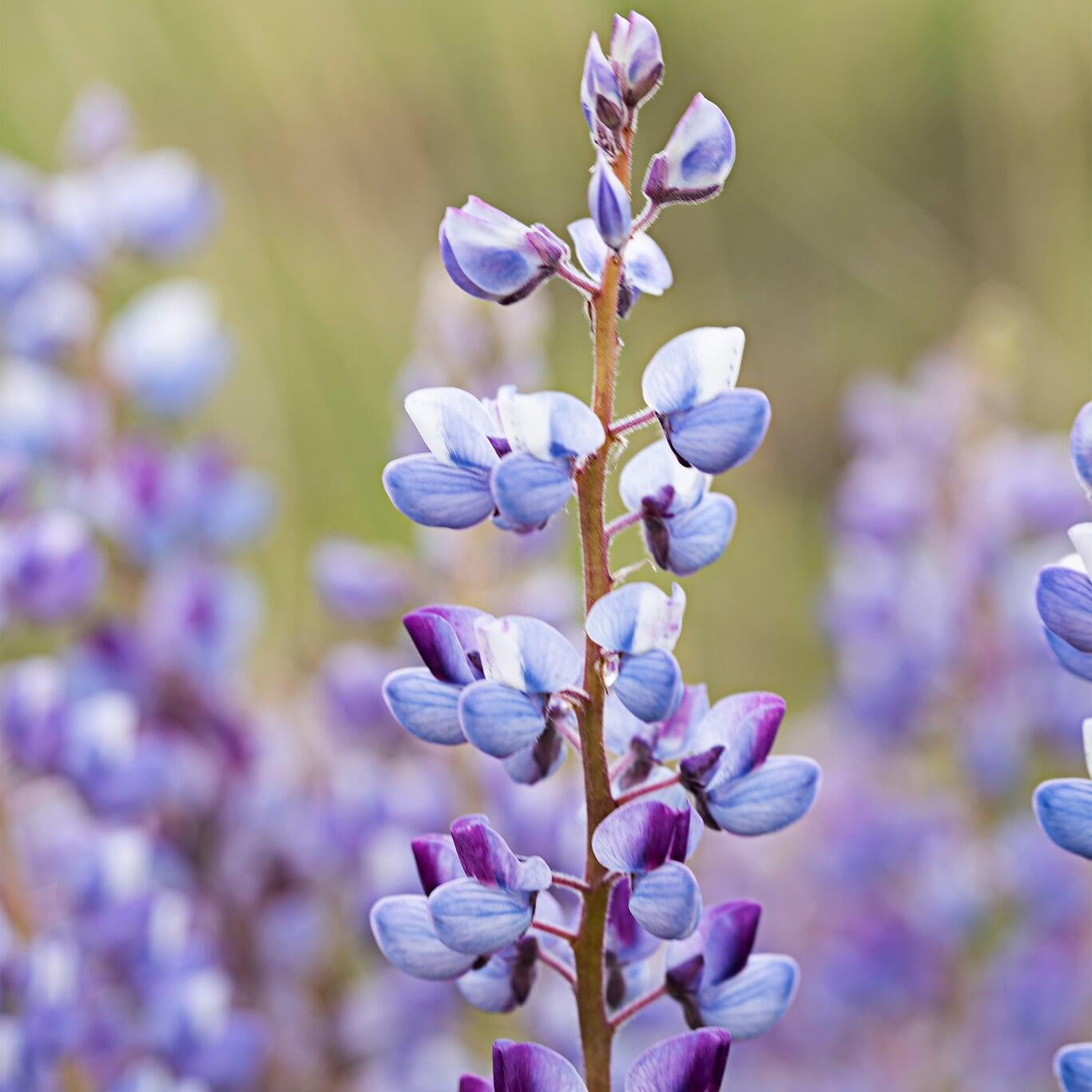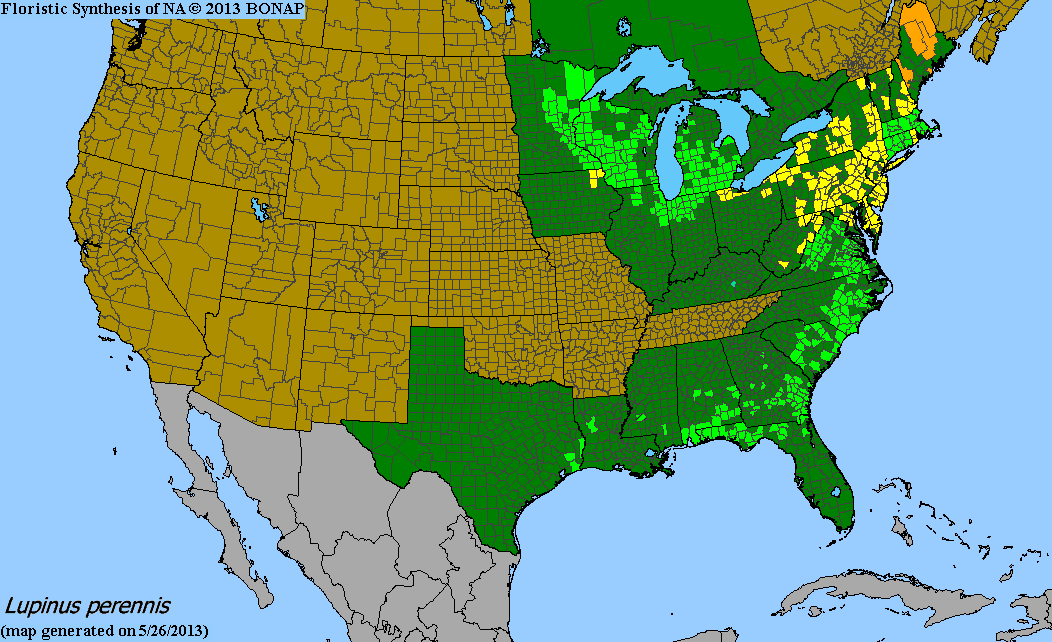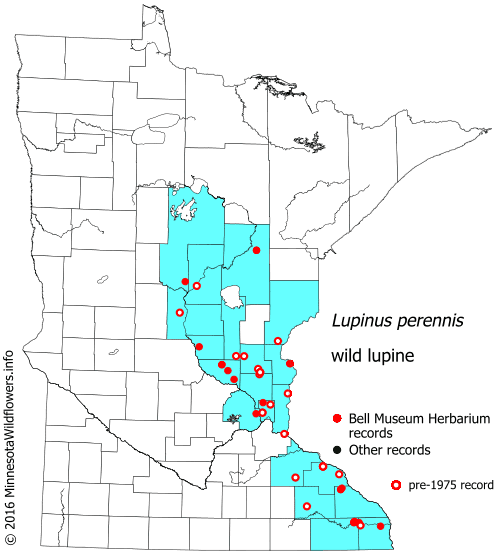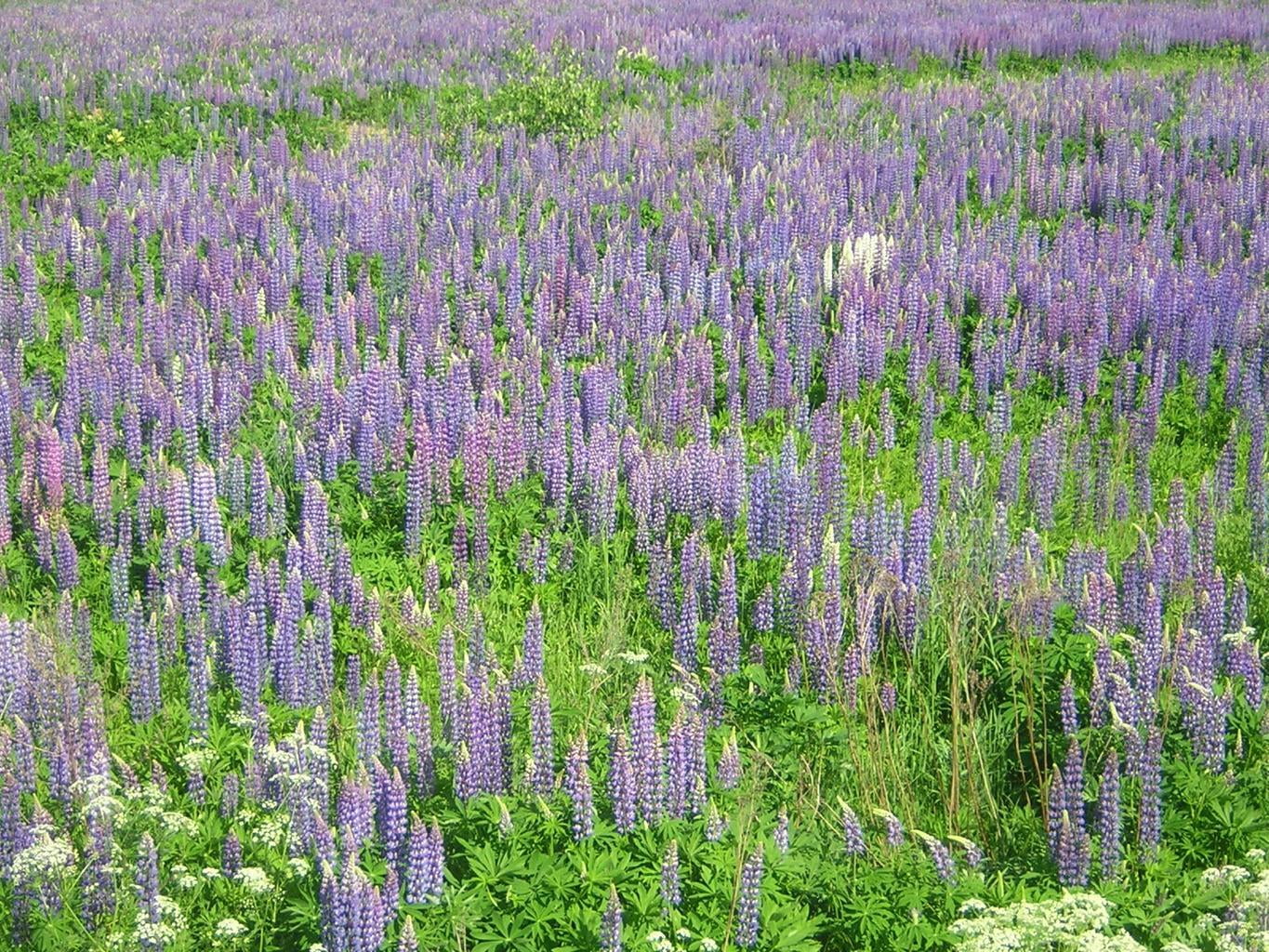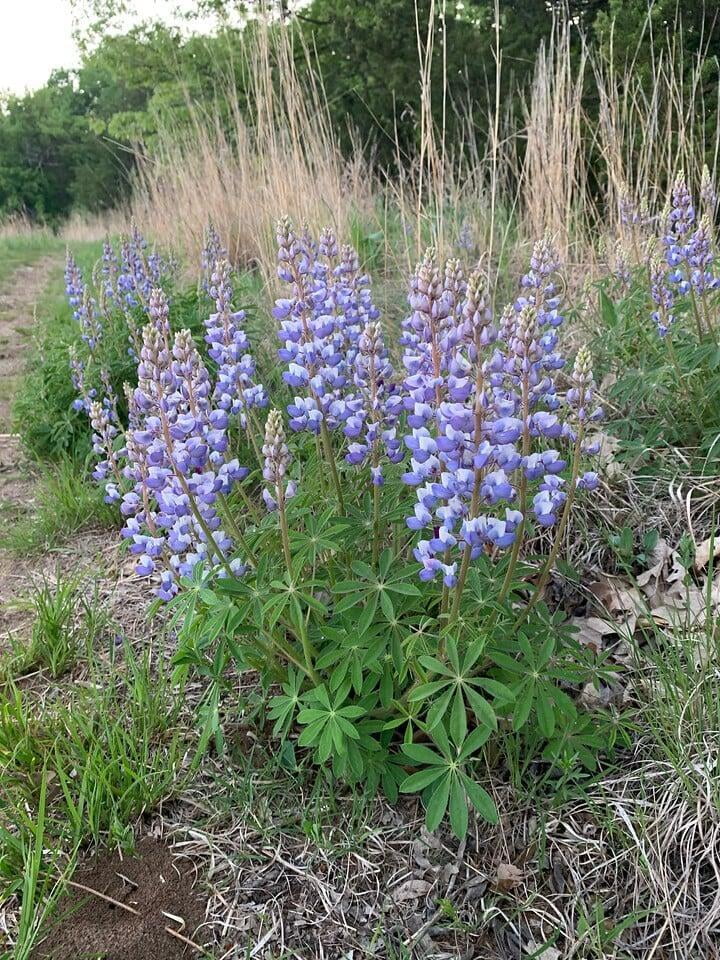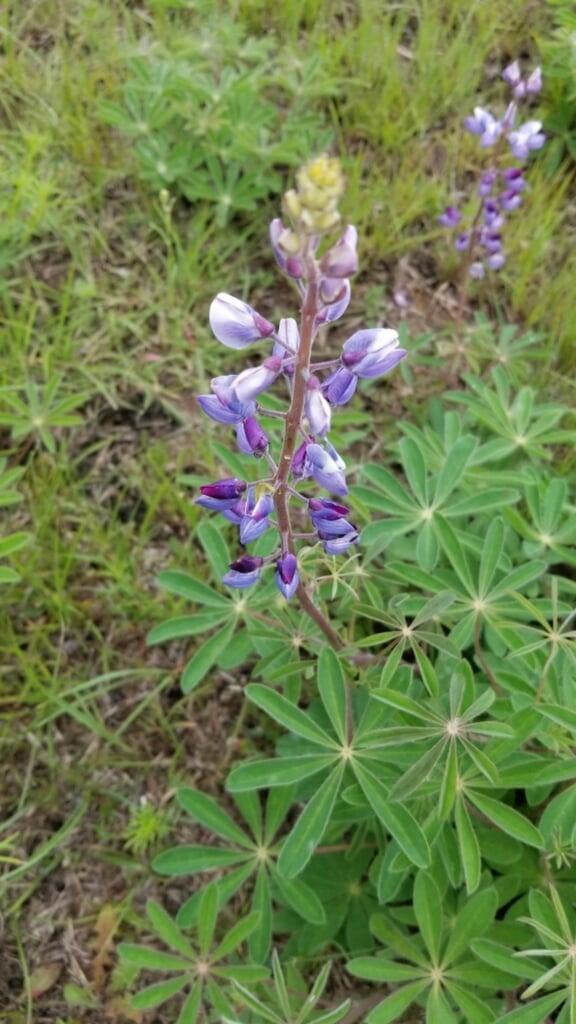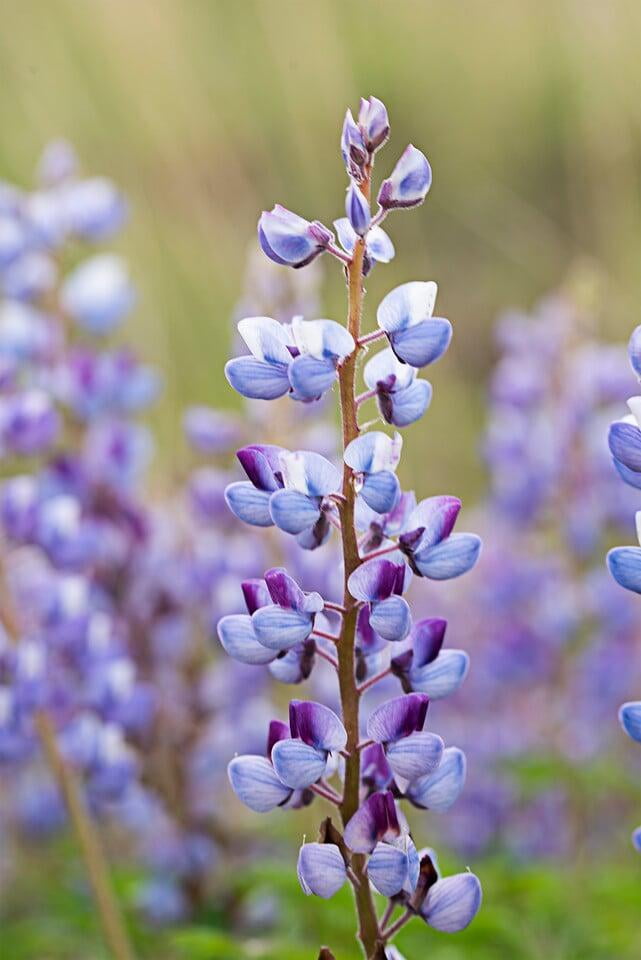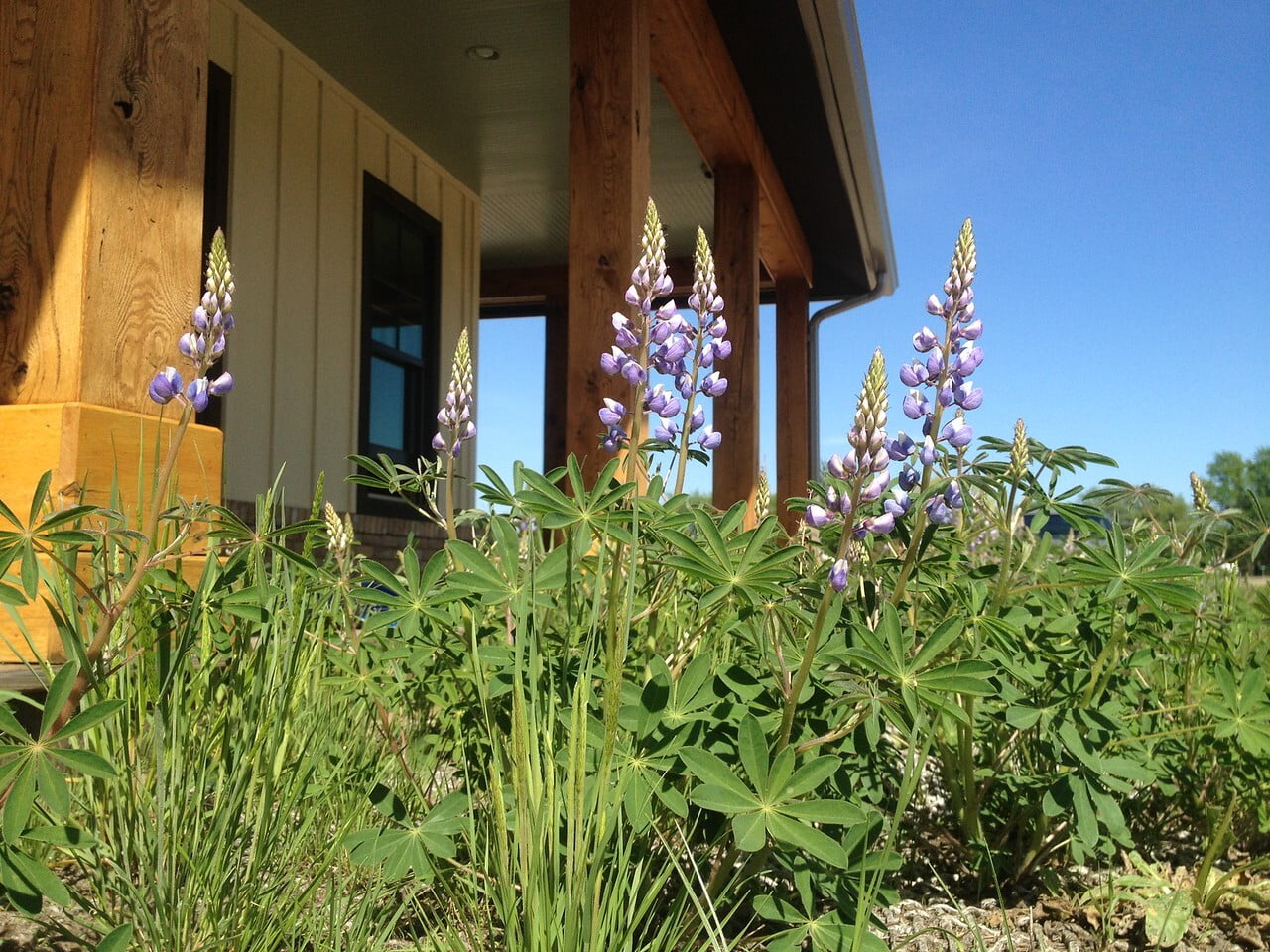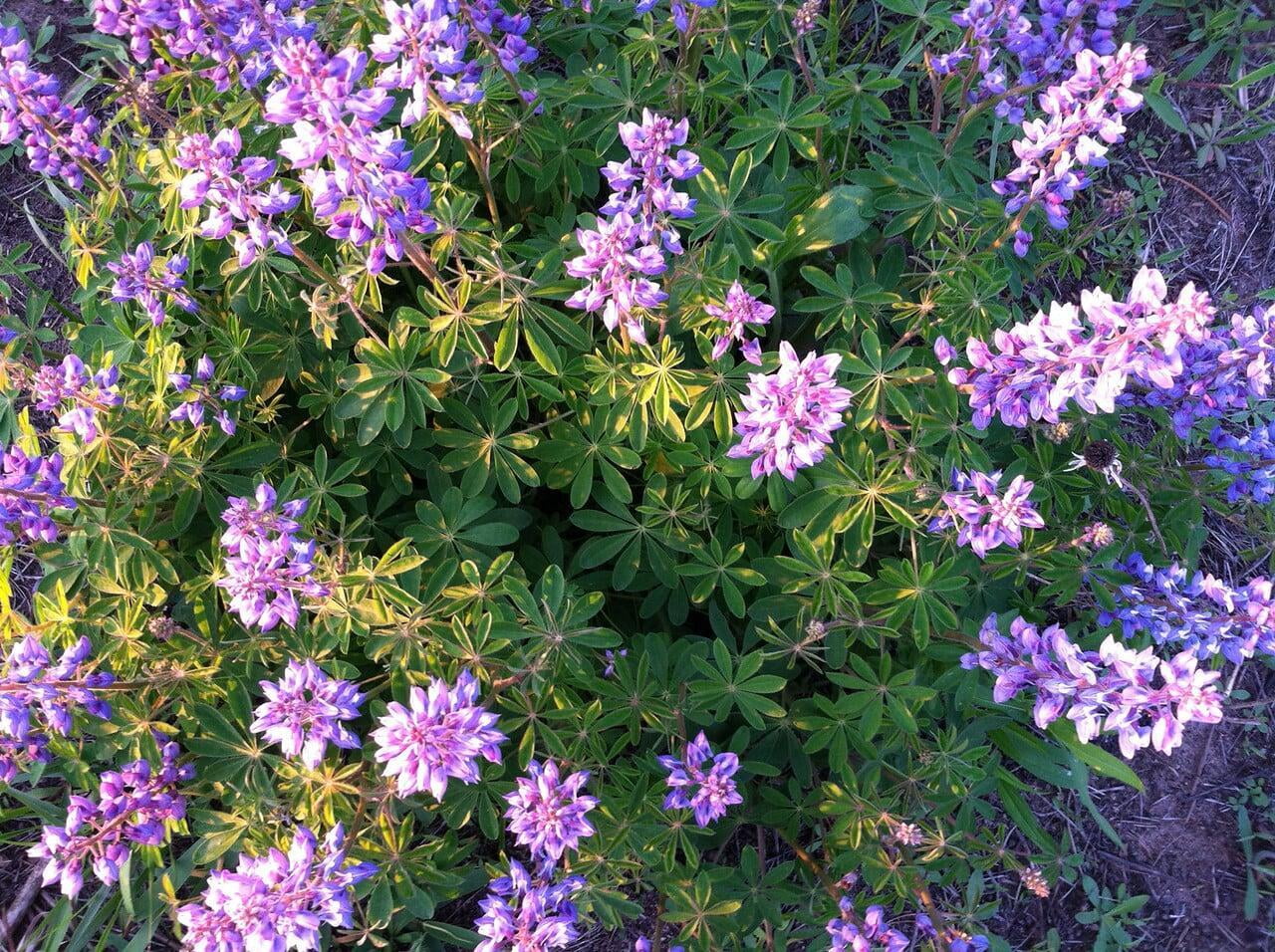Lupinus perennis
Wild lupine Description:
Lupinus perennis, commonly known as wild lupine, is a herbaceous perennial plant that is native to North America. It belongs to the Fabaceae family and is found in dry, sandy soils in prairies, open woods, and along roadsides.
The plant typically grows to a height of 1-2 feet (30-60 cm) and spreads to about 1-2 feet (30-60 cm) in width. It has palmately compound leaves that are green on top and have a silvery-white underside, with each leaflet measuring up to 3 inches (7.6 cm) in length. The stem is typically hairy and erect.
In late spring to early summer, wild lupine produces spikes of showy, blue to purple, pea-like flowers that are arranged in dense clusters at the top of the stem. The flowers are about 1 inch (2.5 cm) long and are particularly attractive to bees, butterflies, and other pollinators.
Wild lupine is a popular garden plant and can be grown in well-drained soils in full sun to partial shade. It is a good choice for naturalized areas, meadow gardens, and butterfly gardens, as well as for attracting wildlife to the garden. The plant is also important ecologically as a nitrogen-fixing plant that contributes to soil fertility, and it plays a critical role in the life cycle of the endangered Karner blue butterfly, which relies on wild lupine as its larval host plant.
Wild lupine has a number of medicinal uses and has been traditionally used as a herbal remedy for a variety of ailments, including as an anti-inflammatory and pain reliever.
Native Range:
Wild lupine is isolated in Minnesota to the Eastern portions of the state. More broadly, Wild lupine is found in the Upper Midwest, Southern states, and East coast.
Standard Plant Information:
Plant Height: 1' - 2'
Bloom Time: May - June
Preferred Habitat: Does well in part shade to full sun and in dry sandy soil. Often found in fields, prairies, and woodland edges.
Sowing:
For most homeowners, the best option is to scatter seed on the ground by hand broadcasting at a minimum of 16-64 pls ounces per acre. For even coverage, we recommend that you broadcast seed in perpendicular rows across the site to ensure even coverage.
You’ll want to broadcast any grass seed first, which will get raked into the soil lightly. Next, it is ideal to mulch the area lightly with either a clean (no seed) straw or preferably with our native Little Bluestem straw, sold at our retail garden centers. After a light mulching is complete, now it’s time to broadcast your native wildflower seeds, which should not be raked into the soil. A good rain or watering is sufficient to cover the seed.
Planting:
Simply dig a hole in the soil slightly larger than the plant’s roots. Ensure that the soil line of the plant is maintained during the transfer (i.e. the plant should be at the same level with the ground as it was in the pot). Pack any loose dirt back around the plant and make sure you water it well the same day to ensure it has the best chance of survival.

